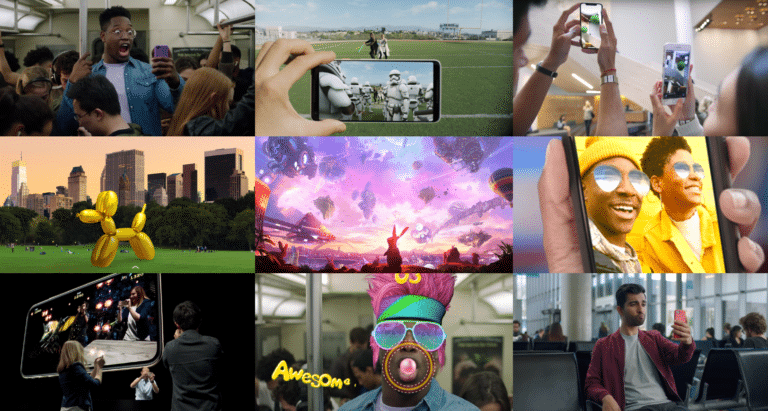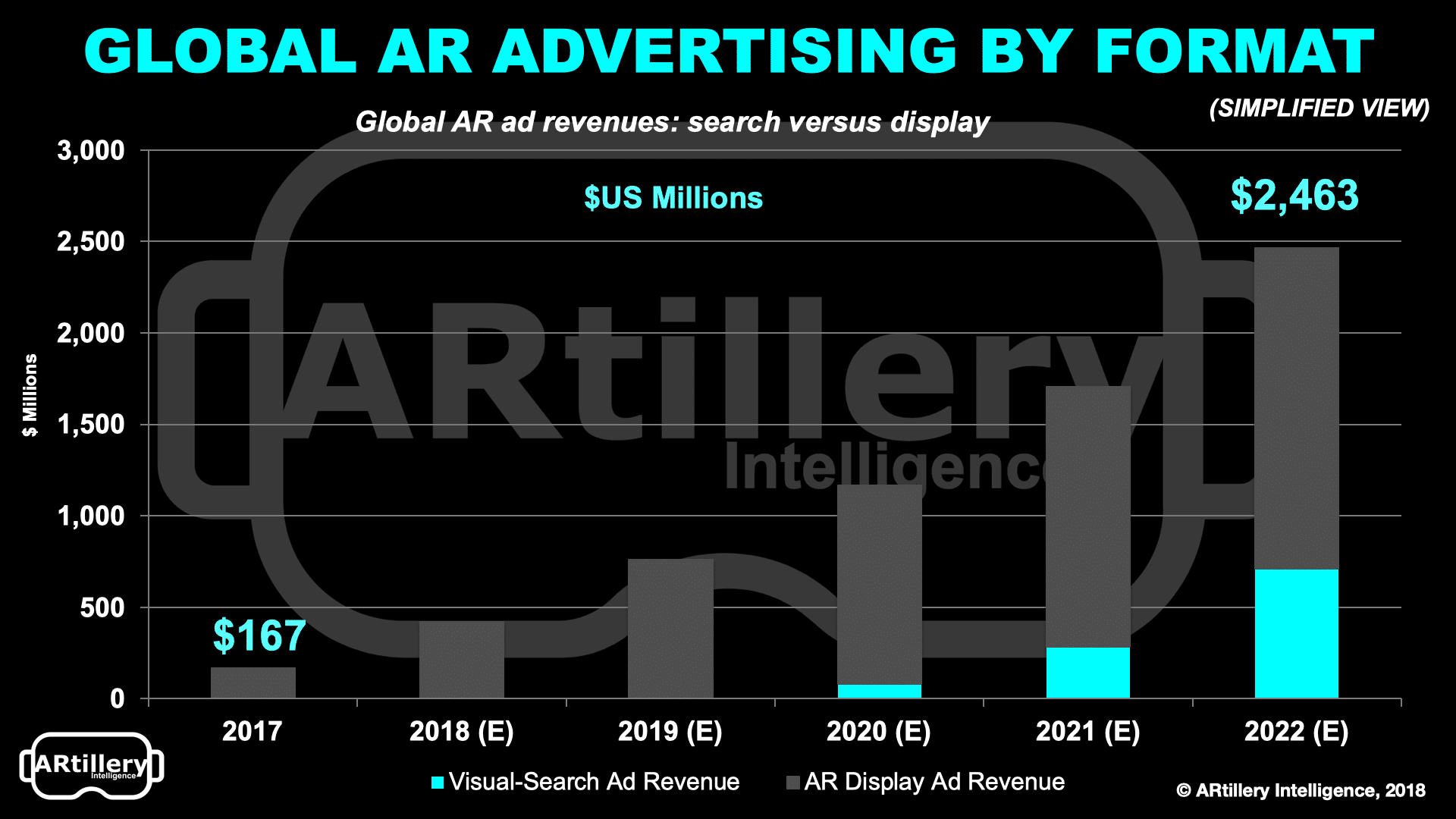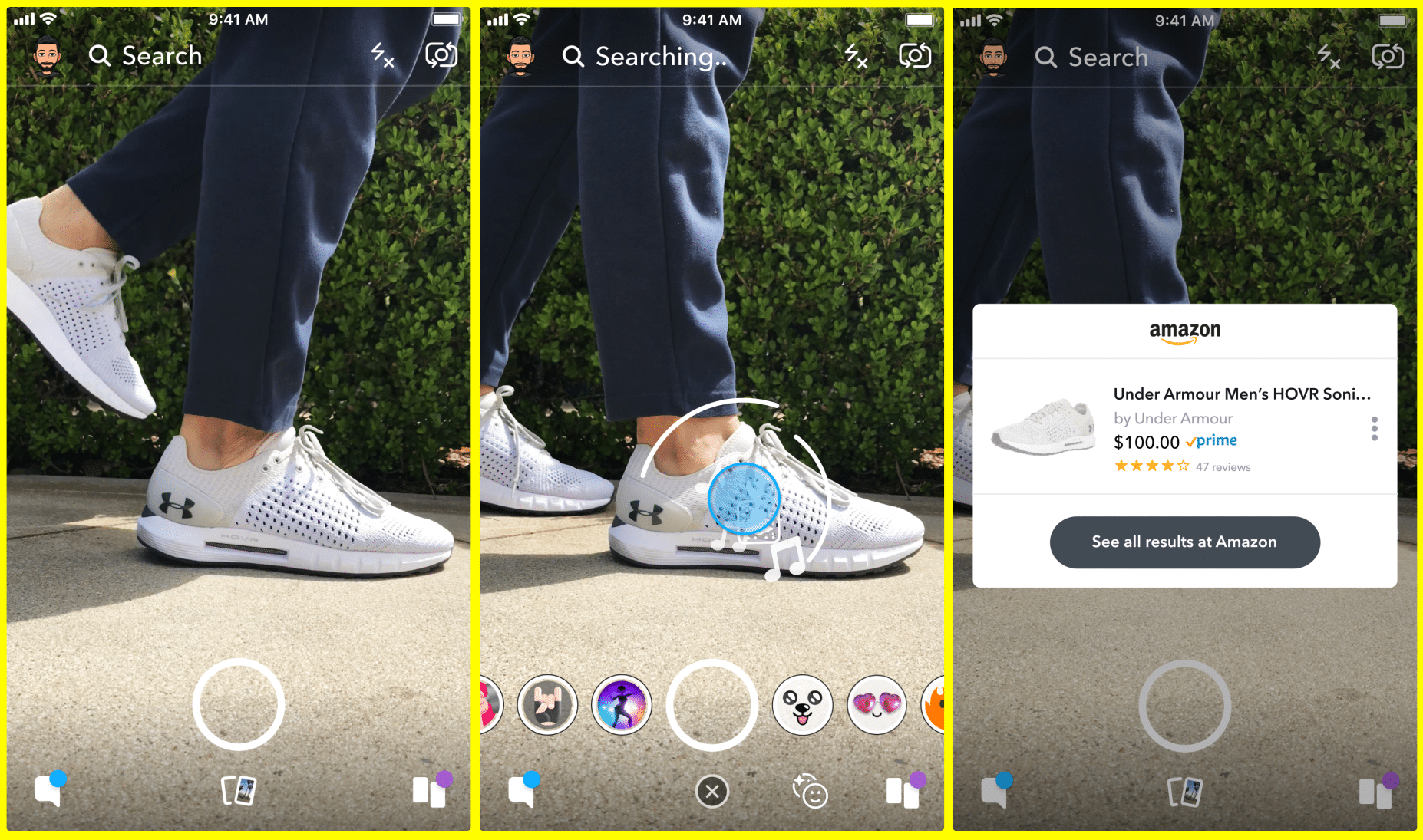
This post is adapted from ARtillery Intelligence’s latest report, Social AR: Spatial Computing’s Network Effect, Part II. It includes some of its data and takeaways. More can be previewed here and subscribe for the full report.
Among early pioneers of mobile AR, Snap has been one of the most successful. Social lenses and selfie masks have become synonymous with AR. And though they get flak for not being “true AR,” it doesn’t matter: they’ve done AR a favor by acclimating the world as its “gateway drug.”
Snapchat has intelligently treated that AR engagement as a monetization opportunity, such as branded AR Lenses. This has vaulted it as an early leader in AR monetization, in addition to penetration and usage. In fact, it currently holds a large share of mobile AR advertising revenues.
Segmenting AR revenue by company and applying our bottom-up forecasting methodology (which calculates industry revenues based on current spending and company revenues), we estimate Snapchat’s AR ad revenue to be $236 million of the $408 million spent on AR ads last year.
This makes it a leader in mobile AR monetization, behind only Niantic’s $2 billion in Pokemon Go revenue. The latter is of course a different revenue model (in-app purchases), and it can be argued that AR is just one component of the gameplay and attributable revenue.
Back to Snapchat, its market share is mostly due to an early lead. Facebook started later with branded lenses, but it will catch up. Due to Facebook’s operational scale and global installed base, it will grow in market share. But Snapchat is currently leading the way.

Short Game
Similar to Facebook, Snapchat’s AR play works on two levels. The first, is to boost its ad revenues by giving advertisers a more engaging format to capture user interest and conversions. And those campaign performance indicators are proving out, as explored further below.
The second level involves using AR to engage its user base to both attract new users and to grow session lengths for existing users. Those goals lead back to ad revenue, but also focus directly on its usage metrics at a time when Snapchat’s user growth continues to slow.
Though Snapchat is an early leader among social networks integrating AR, it’s subject to continued competition from Facebook. In the way that Facebook copied Snapchat formats like Stories, it’s done the same with AR lenses, such as its Spark AR platform examined earlier.
Snapchat has responded by opening up its AR platform for developers: Lens Studio. Previously, it limited AR lens development to its own in-house development team. It’s also moved towards more synchronous AR experiences with Snappables, which add more social AR appeal and use cases.
Snapchat will have to maintain that open attitude if it’s to compete with the volume of AR content and user engagement that Facebook is capable of. Just like Facebook’s copying of other Snapchat formats, it can gain AR market share quickly based on its 1.5 billion global mobile users.
Meanwhile, one advantage Snapchat has over Facebook is its relative affinity among Millennials and Generation Z. Facebook, despite its global scale, faces daunting attrition among younger generations, while Snapchat remains strong. This could be where the battle is waged.

Proof Points
As an example of Snapchat’s AR ads, Foot Locker recently ran an AR campaign. Using Snapchat’s “Ad to AR” format, users swiped up on a related story to reveal a branded lens. The lens featured an interactive AR animation for a new shoe release and Gatorade flavor.
Specifically, users could launch the AR overlay, which featured the new shoe in an animated sequence, placed in their immediate surroundings. The gamified and animated appeal drove an average play time of 45 seconds, and four million total impressions.
Though it wasn’t the case in this campaign, Snapchat’s AR lenses can be integrated with its “shoppable AR” program. This lets advertisers integrate transactional functionality so users can purchase goods right within Snapchat, rather than being bounced to an app or website.
Validating the assertion that AR can influence “lower funnel” conversions, Snapchat boasts a 9 percent sales lift compared to non-AR benchmarks. This commerce infusion will be a key evolution in social AR advertising, given the potential for lower-funnel, high-intent interactions.
Other proof points for AR Lenses’ effectiveness continue to be demonstrated. Not only can they have strong user engagement but another key brand advertiser goal: reach. Though AR in general is nascent and still somewhat niche, AR Lenses can reach television-sized audiences.
The latest evidence is 700 million AR lenses viewed on New Year’s Eve — a 40 percent year over year increase. Other recent event-based campaigns include Nike’s Michael Jordan-themed lens around NBA all-star weekend, and a Lebron James-themed lens activated by Snapcode.

Long Game
Snap extended its AR playbook in September with a feature that lets users scan physical items or barcodes with their camera. It then overlays a card showing info about that item or similar ones. That can include price, reviews and a purchase button, all of which flow from Amazon.
That last part is key, as Snapchat has intelligently partnered for better e-commerce functionality. But beyond just ability to transact, it also taps into Amazon’s vast product image database for better object recognition, which means a more functional and robust user experience.
This brings Snap into visual search, a logical extension. It’s already an early AR leader which has conditioned behavior within a younger user base that has a high affinity for the camera. Fashion is also in its DNA, making the style/product-hunting use case a natural one.
On the first point about alignment with Snapchat’s user base, ViSenze reports that 62 percent of millennials are comfortable with visual search in digital shopping. Not only are millennials (and Gen Z) “XR-native,” but they’re oriented towards things that are tangible and visual.

More importantly, visual search is a natural move because of its monetization potential. Driving commerce is something Snapchat continues to develop such as transaction-enabled AR lenses, and is central to its ability to grow revenue amidst volatile stock performance.
Snapchat’s AR-based revenue so far has been from branded AR lenses, a quickly-growing form of brand advertising, as explored above. But as illustrated in the first chart above, visual search will begin to outpace AR lenses and other display-based AR ad formats in terms of revenue growth.
The longer-term play could also be glasses-based. Like Apple, Snapchat is likely planning for that time horizon. Also like Apple, its mobile efforts could be a training ground for AR glasses, for both users and developers. Though not AR, Snap Spectacles could have a “conditioning” effect.
“That’s the secret strategy or the Trojan horse: How do you get enough sensors in people’s hands at a cheap price or on their face,” Ubiquity 6 CEO Anjney Midha said. “That sets them up for very immersive AR experiences or any kind of VR experiences a year or two years from now.”
See more details about this report or continue reading here.
For deeper XR data and intelligence, join ARtillery PRO and subscribe to the free AR Insider Weekly newsletter.
Disclosure: AR Insider has no financial stake in the companies mentioned in this post, nor received payment for its production. Disclosure and ethics policy can be seen here.
